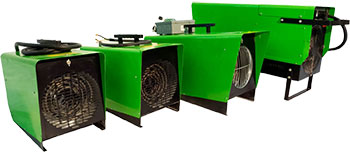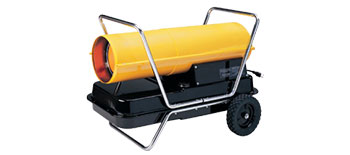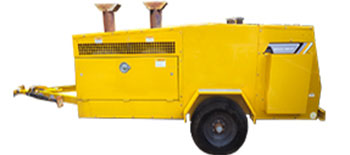Temporary Heating Equipment
Temporary heating equipment plays an important role in working effectively during cold weather. They allow temperature-critical work to continue and provide a more comfortable working environment. Improper selection and use however, can lead to worker injury or property damage.
Temporary heating equipment falls into three main categories: Electric, Direct-Fired, and Indirect-Fired.

Electric heaters are becoming the most popular with simple operation. Electricity passes through a resistant coil producing heat. A fan draws room air across the coil transferring heat to the air, which is then forced back into the room. Advantages of electric heat are that they provide clean heat with no emissions, simple to maintain, and do not require fueling to be stored onsite.

Direct-fired heaters typically referred to as “salamanders” or “torpedo heaters” operate by pulling air from the room being heated directly across an open flame, forcing its way back into the room. These units are typically fueled by propane, natural gas, diesel, or kerosene. Adequate ventilation must be provided while units are in use.

Indirect-fired heaters are becoming a growing trend in the temporary heating equipment business. Fuel is burned in an enclosed combustion chamber drawing combustion air from outside the building. The flame heats a heat exchanger which indirectly warms outside air this is fan-driven into the building via air ducts. Both the burner and fuel source are located outside the building which reduces the risk or fire or carbon monoxide buildup.
Read More about Temporary Heating from Neat Heat & Cooling
